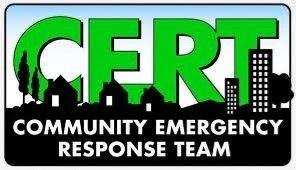Pandemic Preparedness and Review
This course is to assist Claremont CERT Members to review information on Pandemic preparedness and provide a review of basic hygiene techniques to keep yourself well in order to assist others.
As a CERT member you can help yourself, your family, and your neighbors prepare for and respond to a flu pandemic by:
- Learning about the potential health and social impacts of pandemic flu
- Finding out about local health department or other government pandemic flu response plans
- Identifying community members whose needs might not be met during a severe pandemic
- Identifying activities that CERT members could safely perform during a pandemic
- Keeping neighbors informed and responding to rumors and misinformation with up-todate and accurate information about pandemic flu to curb fear and confusion
- Helping neighbors learn what they can do to reduce their risk of getting sick by teaching basic hygiene techniques such as proper ways to cover a cough and hand washing
What This Module Is
- An overview of pandemic flu
- To train you as a CERT member to protect yourself, your family, and your neighbors from getting pandemic flu
- A review of CERT roles before, during, and after a flu pandemic. For people with little or no medical background
What This Module Is Not
- An in-depth look at the science of viruses that cause pandemic flu
- Designed to prepare you to provide medical care for your neighbors
___________________________________________________________________________________________________________
NOVEL CORONAVIRUS INFORMATION
Information from CDC as of 2/26/2020
It is likely there will be more cases of 2019-nCoV reported in the U.S. in the coming days and weeks, including more person-to-person spread. CDC will continue to update the public as we learn more about this coronavirus. The best way to prevent infection is to avoid being exposed to this virus. Right now, 2019-nCoV has not been found to be spreading widely in the United States, so CDC deems the immediate risk from this virus to the general public to be low. However, risk is dependent on exposure, and people who are in contact with people with 2019-nCoV are likely to be at greater risk of infection and should take the precautions outlined in CDC’s guidance for preventing spread in homes and communities.
For the general public, no additional precautions are recommended at this time beyond the simple daily precautions that everyone should always take. It is currently flu and respiratory disease season, and CDC recommends getting vaccinated, taking everyday preventive actions to stop the spread of germs, and taking flu antivirals if prescribed. Right now, CDC recommends travelers avoid all nonessential travel to China
What are the symptoms I should be looking for? Who is most at risk?
Patients with a confirmed Novel coronavirus infection have reportedly had mild to severe respiratory illness with symptoms of:
- Fever (>100.4 °F or 38°C)
- cough
- shortness of breath
- sore throat
Many cases appear to be mild. Individuals who are elderly, have weakened immune systems, or have other underlying health conditions appear to be at risk for more severe disease.
The best way to prevent infection is to avoid being exposed to the virus. However, as a reminder, preventative actions to help prevent the spread of respiratory viruses include:
- Washing your hands often with soap
- Avoid touching your eyes, nose and mouth with unwashed hands
- Stay home when you are sick
- Cover your cough or sneeze
- Clean and disinfect frequently touched surfaces
